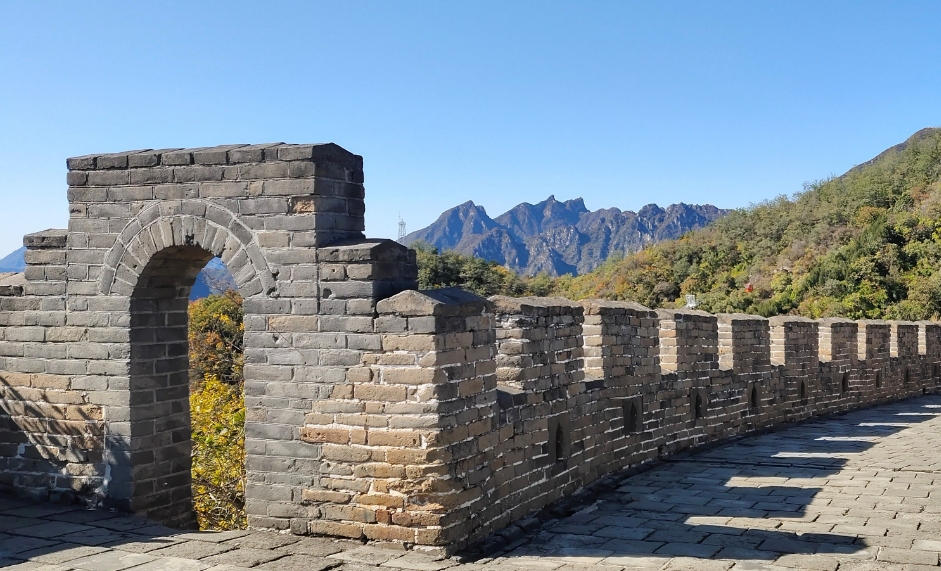
The Majestic Mutianyu: Facts about a Great Wall Wonder
The Great Wall of China, a testament to human ingenuity and perseverance, snakes across the landscape, a dragon of stone and history. Among its many magnificent sections, the Mutianyu Great Wall stands out, captivating visitors with its stunning scenery and architectural prowess. Let's delve into the fascinating facts that make Mutianyu a must-see destination:
Basic Facts & Location:
- Nestled amidst the verdant mountains approximately 70 kilometers (43 miles) northeast of Beijing, the Mutianyu section stretches for 2.25 kilometers (1.4 miles).
- Initially erected during the Northern Qi Dynasty (550-577 AD), it served as a critical northern defense outpost.
- The Mutianyu we see today was extensively renovated during the Ming Dynasty under the leadership of General Xu Da, renowned for his military brilliance.
- In 1988, after meticulous restoration, Mutianyu opened its gates to the public, sharing its grandeur with the world.
Architectural Marvels:
- Granite Giant: Unlike other sections primarily built with brick, Mutianyu's walls are predominantly constructed with large granite blocks, quarried from the surrounding mountains. This unique characteristic contributes to its exceptional strength and resilience against the elements.
- Imposing Dimensions: The walls stand tall, averaging 7-8 meters (23-26 feet) in height. This towering stature served as a formidable barrier against invaders. The wall's width, ranging from 4-5 meters (13-16 feet), provided ample space for soldiers and equipment to maneuver effectively.
- Double-Sided Defense: A distinctive feature of Mutianyu is the presence of crenellated parapets on both sides of the wall. These tooth-like structures offered strategic advantages, allowing defenders to rain arrows or launch projectiles at approaching enemies from multiple angles.
- Guard Towers Galore: The Mutianyu section boasts a higher density of watchtowers compared to other parts of the Great Wall. 22 watchtowers, strategically positioned along its course, provided panoramic views and served as crucial lookout points and defensive strongholds. Among them, the most iconic is the "Zhengguantai," a large three-story tower offering breathtaking panoramic vistas.
Experiencing Mutianyu:
Today, Mutianyu offers an unforgettable experience for visitors of all ages and abilities.
- Hiking: Well-maintained pathways cater to different fitness levels, allowing visitors to hike along the wall and soak in the breathtaking views.
- Cable Car & Toboggan Ride: For those seeking a less strenuous ascent or descent, a cable car provides easy access to the highest points. Thrill-seekers can opt for a exhilarating toboggan ride down the mountainside.
- Immersive History: Informative plaques and signage throughout the site provide fascinating insights into Mutianyu's history, architecture, and significance.
More than just a Wall: Mutianyu is more than just an architectural wonder. It is a symbol of China's rich history, embodying the nation's resilience, ingenuity, and unwavering spirit. A visit to Mutianyu is an unforgettable journey through time, offering breathtaking scenery, architectural marvels, and a glimpse into a pivotal chapter of human history.
Q&A:
Q1: What makes the construction of the Mutianyu Great Wall unique?
A1: Unlike other sections largely built with brick, Mutianyu predominantly uses large granite blocks, making it exceptionally strong and weather-resistant.
Q2: Why does Mutianyu have so many watchtowers?
A2: With a higher density of watchtowers compared to other sections, Mutianyu benefited from enhanced surveillance and defense capabilities. These towers provided panoramic views and served as crucial lookout points and defensive strongholds.
Q3: Apart from hiking, how else can I explore the Mutianyu Great Wall?
A3: You can take a cable car to the top for breathtaking views or enjoy a thrilling toboggan ride down the mountainside.
note: This return of all, without the author's permission, may not be reproduced